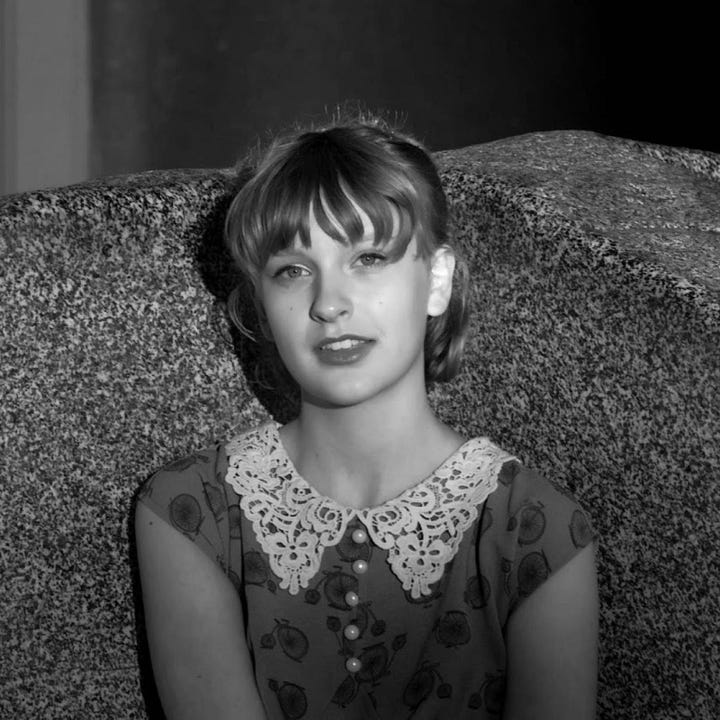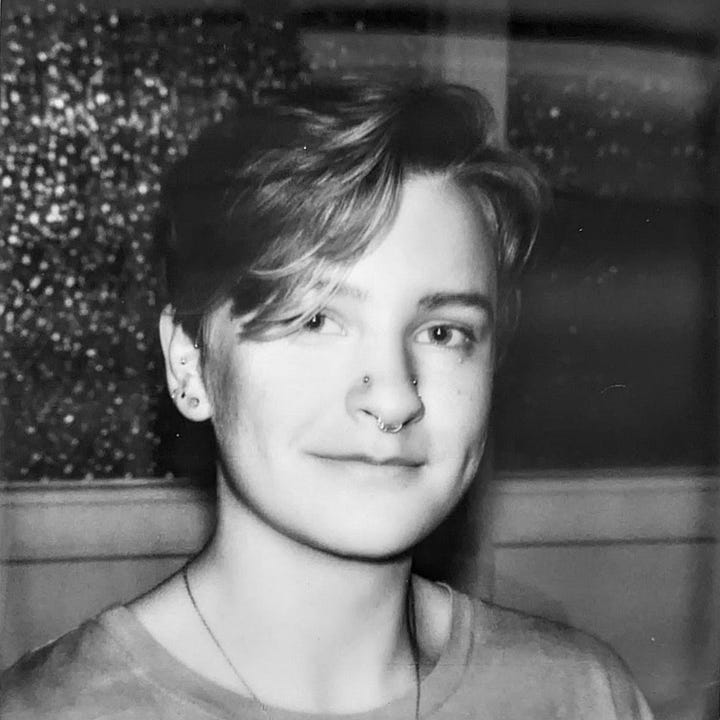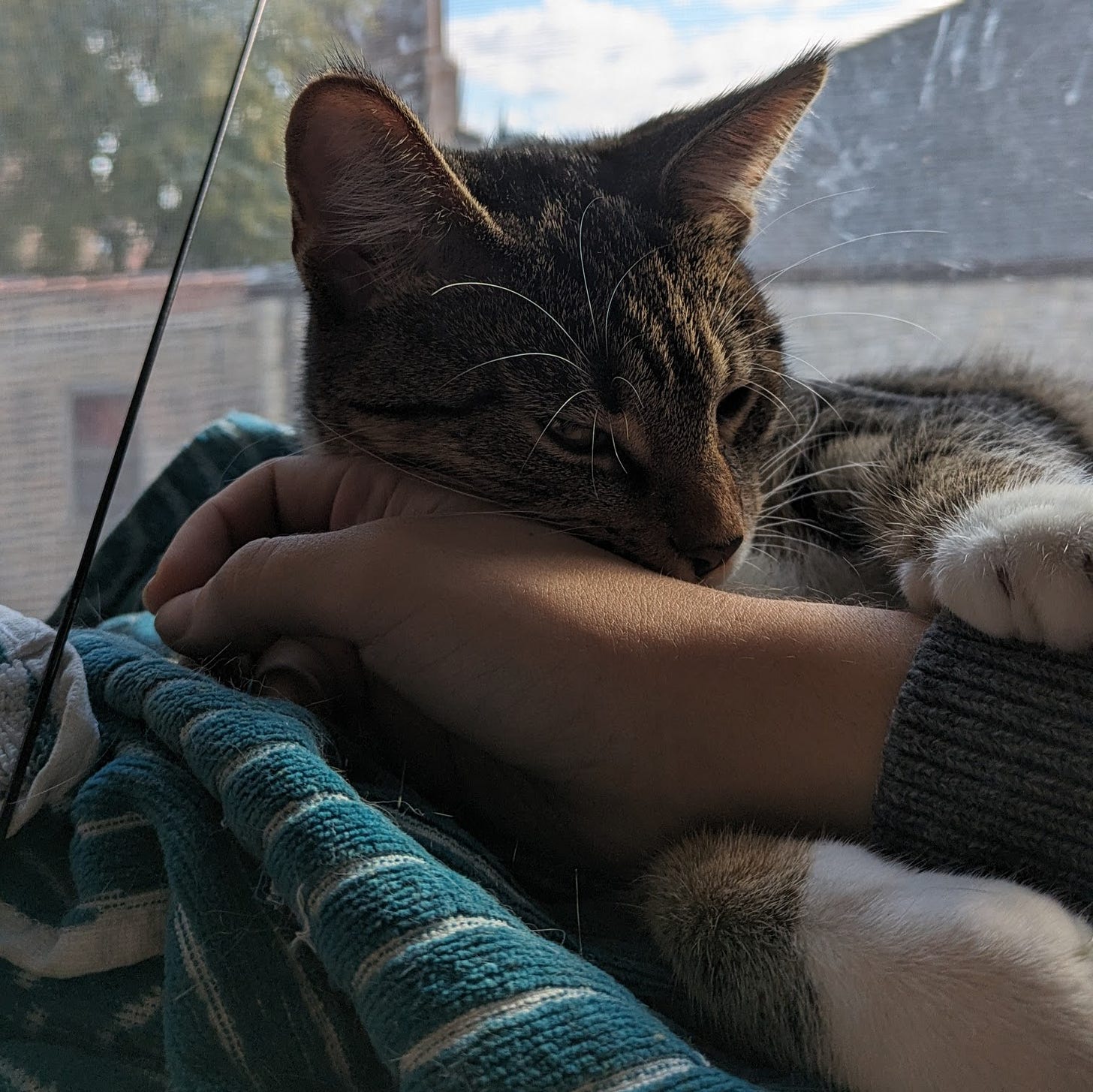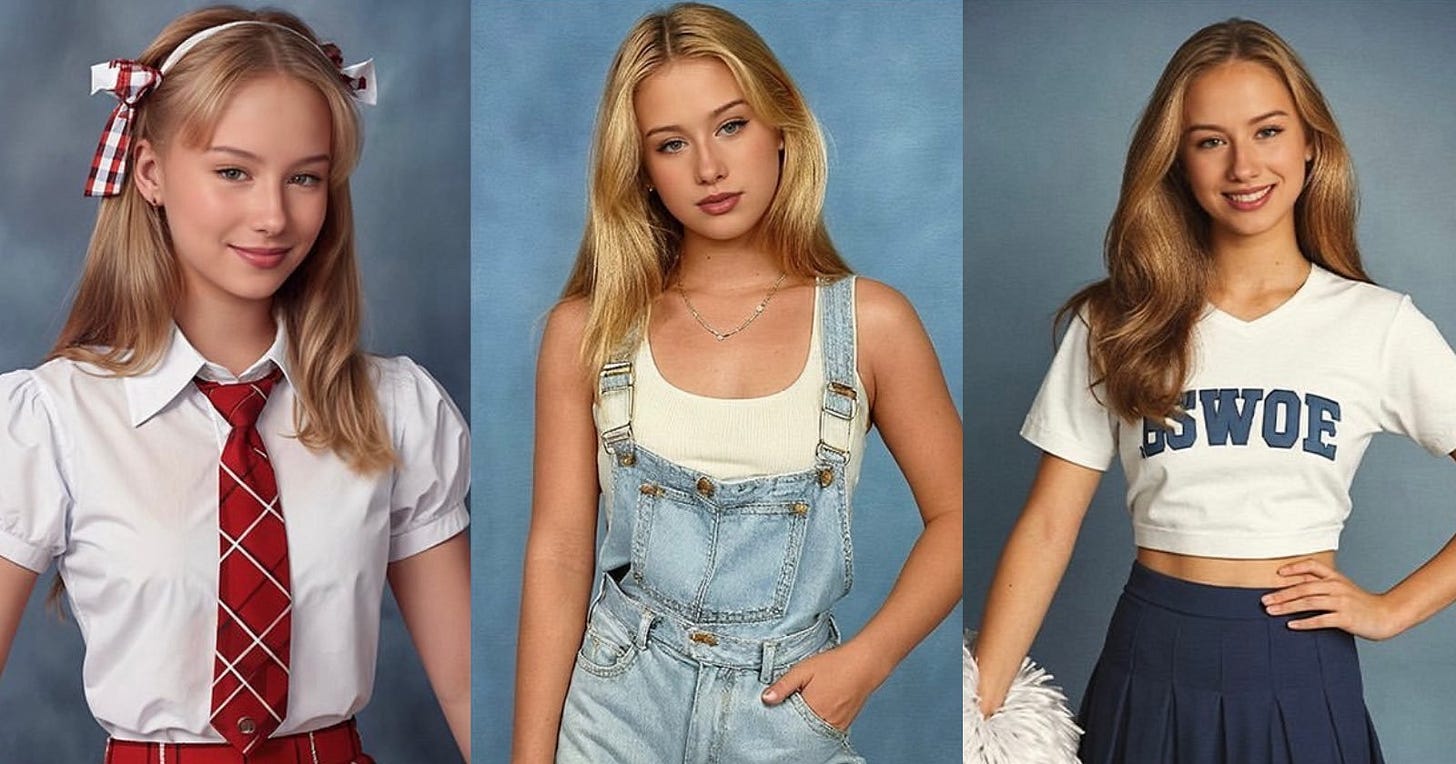I know it’s been a while. I’m sorry. You’re going to want to buckle up, though, because I have around twenty-one months worth of stuff to say. I’ll try my best to make it worth your time, and to keep it under twenty-one-hundred words (no promises though).
When it comes to answering the question of where I’ve been, there are lots of easy answers. I’ve been making friends and working hard in a new city. I’ve been avoiding Substack, as a brand and as a company, for myriad reasons I could list but don’t want to (read articles like this one for a quick rundown). I’ve been writing film reviews for The Chicago Reader. I’ve been giving my cat kisses on her little baby head.
What’s harder to answer is the question of why I haven’t been here, too, sharing my love of yearbooks with all of you.
To be clear, that love hasn’t waned — if anything, my collection has grown, and my thoughts on yearbooks have been accumulating like drops of water in a bucket. So why haven’t I felt the need to write them down, explore them further and present them to you for further discussion?
For one thing, life happened (as it is wont to do). I found myself pouring my energy into other buckets: starting a new job, nurturing spider plants, keeping a kitten out of trouble, drawing silly little gay people on my iPad. But as the weather grew warmer in 2022 and I began to reach a state of equilibrium after my job change, I found that my big pile of yearbooks wasn’t calling to me anymore. The volumes just sat there silently, gathering dust and warping my flimsy particleboard bookshelf.
So what had driven me to invest so much time and care into this project in the first place, and why didn’t I consider it a necessary part of my life anymore? This is something I wondered for months after inadvertently dropping off the face of Substack. In November of 2021, H.A.G.S. topped my list of priorities, and now it had completely fallen off the map. Why?
It turns out, after some introspection — Who, me? Overanalyze? — that from the beginning, this newsletter was more than just a pastime to me. Without fully realizing it, I’d started H.A.G.S. to investigate some big questions, ones I had been struggling with for most of my life: Is identity ever-shifting, or does it stagnate and solidify after adolescence? Must gender dictate the lives we lead and how we’re remembered? Is it ever too late to change?
I’ve always looked to the past for answers — I’ve scoured library books, thrifted diaries, found photographs, and family members’ memories to try to understand what function I was meant to serve (and why serving it felt so fraught and awful, like I was wearing a pair of too-tight shoes). I’ve spilled plenty of metaphorical ink on women’s burdens, teenagers’ sorrows, and my own attempts to feel seen in search of satisfaction I found endlessly elusive.
But that’s what you do when you don’t trust yourself: you look outside yourself, seeking wisdom in the past or in the words of people you deem smarter and more experienced than you. It wasn’t until I stopped looking outside myself (in old yearbooks, for instance) to “solve” my qualms with identity that I actually started uncovering answers — answers in the place I never would have thought to look: within myself.
Okay, sorry, that was cheesy. Just… let me show you what I mean.
In early October, my Instagram feed became clogged with yearbook photos. I scrolled through countless five- to ten-image carousels of 1980s- and 1990s-esque portraits (in front of that classic blue marbled background) that embodied every John Hughes high school stereotype: cheerleaders and preppy girls in Catholic school pleated skirts, or athletes in letterman jackets and edgy leather-clad rebels without a cause. (Or, in the case of the androgynous few, any and all of the above.)
My first thought: “This is so cool!”
My second thought: “Wait, hold on — didn’t we agree that AI art is spooky and bad?”
Just months earlier, the discourse polarizing online artists and sparking literal workers strikes drove many of us to declare that we would never willingly hand over our likenesses to the AI overlords. And yet here so many folks — including actors striking against adoption of AI in their industries — were, uploading their selfies to EPIK in exchange for a handful of (admittedly pretty cool-looking) pictures of a fictional past self.
And I get why they’d want to! This AI photo trend had even the most ardent defenders of artists’ intellectual property rights in a chokehold for a number of totally understandable reasons. For one thing, we’ve been riding the cultural wave of ‘80s (and ‘90s) romanticization for years now, and when that’s combined with references to adolescence, it creates some pretty potent nostalgia fuel for Millennials and Zoomers, and Gen Xers reliving their high school years. (And I’m not even mentioning the inextricable link between media depictions of teenagers throughout the 1980s and the current visual language we use to depict adolescence — that’s some life-imitates-art bullshit I’ll pontificate on another day.)
The use of the word “nostalgia” here might feel confusing. After all, can you really feel nostalgic for things that never happened (or, at least, never happened to you)?
In his excellent essay, “Nostalgia Reimagined,” Felipe De Brigard refutes this traditional understanding of nostalgia by arguing that memory and imagination are more closely related than we often recognize. He writes:
How can we make sense of the fact that people feel nostalgia not only for past experiences but also for generic time periods? My suggestion, inspired by recent evidence from cognitive psychology and neuroscience, is that the variety of nostalgia’s objects is explained by the fact that its cognitive component is not an autobiographical memory, but a mental simulation — an imagination, if you will — of which episodic recollections are a sub-class.
In other words, if we can dream it, we can yearn for it. And because so much of our emotional experience of nostalgia lies in sentimentalizing days gone by — regardless of whether or not we actually experienced those days — it doesn’t necessarily matter whether or not we’re remembering or imagining; what we’re missing never really happened anyway.
Partially because of this cognitive dissonance, De Brigard says, it can be difficult to find what truly satisfies this yearning. One solution, he says, might be that:
[…] what the subject desires is for the past situation to be brought to the present; that is, she doesn’t wish to travel back in time to a past situation, but rather that the past situation could somehow replace the current one. Here, the object that could satisfy the nostalgic desire would be found not in the past but in the present, and what causes the pain is a different kind of impossibility: that of recreating the past in the present.
This rewriting of the past in the present is exactly what Dusty Brandt Howard (@transsexualdreamboat) describes when sharing his own AI yearbook photos, in the one Instagram post that helped me to understand how a trend like this can actually help more than hurt some of us (privacy rights be damned).
“these photos are really helping me see the boy i am and always have been,” Howard writes in the caption of his post. “i love witnessing all the trans people getting to experience this and seeing themselves the way i see them 🦋”
This commentary struck me like a punch to the chest. Amidst the endless scroll of cis people wondering what they’d look like with an ‘80s mullet, here was someone using this trend to realize an imagined past, one in which his peers saw his truest self.
And it got me thinking about my own fascination with yearbooks and yearbook photos, this moment in time captured and trapped forever between the pages of a book, meant to represent a whole year of your life. How can one photo accurately represent one waking minute of your existence, let alone a whole year?
I remember agonizing over my senior photos (so much so that I had two separate shoots) and still feeling they fell far short of representing who I truly was. How many of the people whose yearbook photos I’ve examined for hours had felt the same way?
Our past selves are characters, avatars, static and shiny in ways real people aren’t. I’ve spent my life punishing myself not staying static, and for not wanting to. I’ve spent my life trying to squish my insides to match what I saw when I looked at my yearbook photo, and I’ve spent the past couple of years leafing through old yearbooks trying to find others who felt constrained — boxed in, if you will — during adolescence, too.
Dusty Brandt Howard again: “when you are trans and you don’t grow up looking the way you do now, i think it’s easy to forget what you look like. or not believe you actually look that way.” When I started H.A.G.S., I was still in a season of my life where I felt so afraid of “losing myself” — the “self” I saw reflected in the pages of my high school yearbook, a “self” I knew how to be but wasn’t sure I wanted to be — that I refused to trust myself, to change. I didn’t want to flip through old photos and find myself looking at a stranger.
I flip through the pages of my yearbook collection now with a renewed appreciation for the humanity of the people whose photos are printed there; I’ve realized that while I’ll never truly know any one of these multifaceted individuals fully, I also don’t need to dissect this relic they left behind to learn who I am — I already have all of the answers.
And when I look at my senior photos now, I will admit that I’m not seeing the person who stared back at me in the bathroom mirror this morning. But that’s okay. Good, even. The person in the mirror is more than a character, an avatar, a collection of superlatives. They’re living, and changing, and happy.


If there’s one thing that I’d like you to take away from H.A.G.S., it’s this: yearbooks are important. They’re important not just as cultural or historic artifacts (although they serve both purposes), but as reflections of identity and growth. We might not think about it much in the current Instagram age, but how many times will our likeness be captured and immortalized in a commercially bound book (that wasn’t made by our mom on Shutterstock)? The fact that this occurs throughout our childhood and adolescence, and that we can watch ourselves grow and change on glossy paper, our years of learning narrativized and forced through a rose-colored filter, feels important, if not incredible, to me.
While this is the last post of H.A.G.S., it isn’t the last time I’ll yap about yearbooks, or the last time I’ll have questions about adolescence and identity and ephemera and why John Hughes wrote female characters the way he did. If anything, I have more questions about more things than ever before, and just as much drive to explore them all. The biggest thing that’s changed is that I'm no longer lying awake at night wondering, Do we grow beyond who we were when we were sixteen? Is this all I'll ever be? (Thank heavens for that.)
And because I have more questions to explore, because my inner world has gotten so much larger since we’ve last spoken, I need a new place to pontificate — it’s clear I’ve outgrown this summer-and-a-bit project. I still want to chat with you guys, and I’m grateful to those of you who’ve stuck around. I’m going to be M.I.A. the rest of the year (sorry for abandoning you yet again), but at the beginning of 2024, keep an eye on the H.A.G.S. landing page (and your inbox) — I’ll tell you where to find me next. I look forward to keeping the conversation flowing.
Thanks for everything. What a long, strange trip it’s been.







A brave, remarkable, insightful, introspection, Brooks. Looking forward to Your Next.